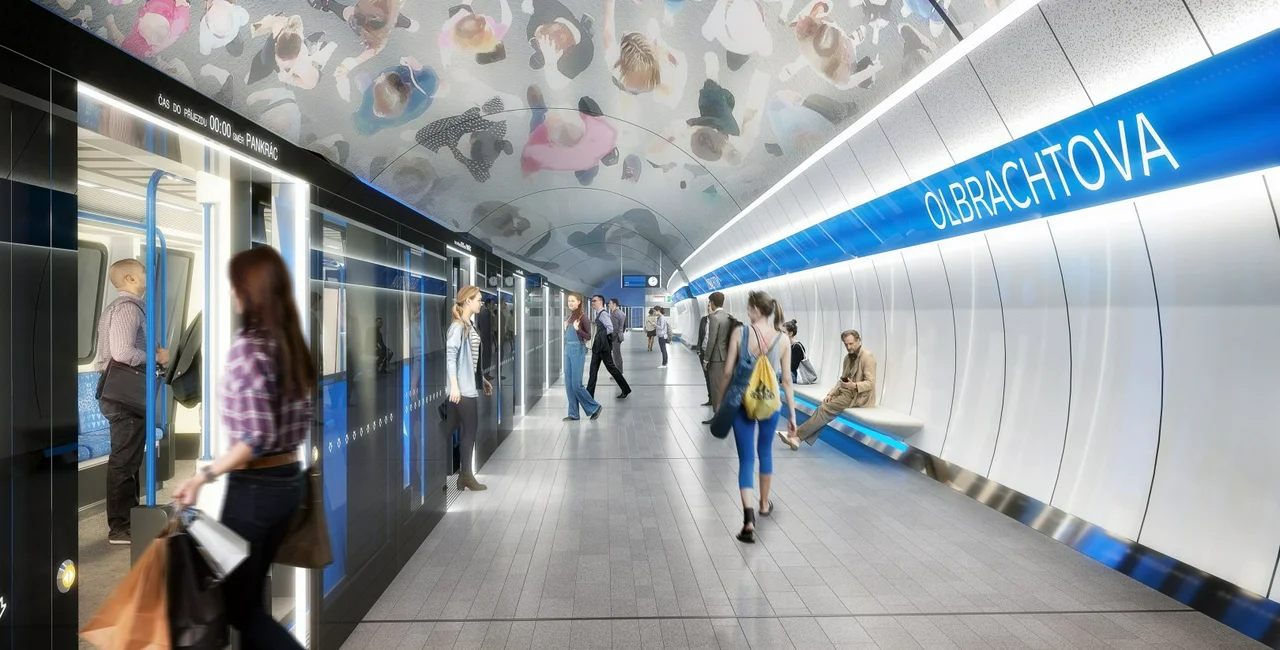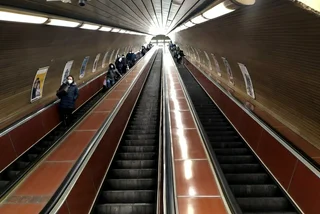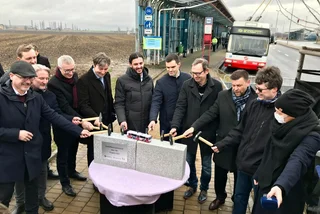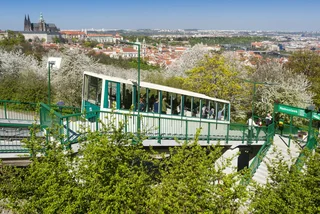Prague’s long-planned metro D line now has final approval. The Czech Transport Ministry rejected an appeal lodged against the issuing of a building permit. No further objections can be made.
“As a result, the main construction will receive a valid building permit within 15 days after the decision is delivered, and we will be able to start the construction project of the decade. It is an incredible success. You don't even know how relieved I am,” Prague Deputy Mayor Adam Scheinherr, responsible for transport, said on Facebook.
PARTNER ARTICLE
The Czech Office for the Protection of Competition (ÚOHS) also confirmed that the Prague Public Transit Company (DPP) and Prague City Hall followed proper procedures in selecting contractors for the project. In June 2021, Prague City Hall announced that a consortium of Subterra, Hochtief CZ, Strabag, Hochtief Infrastructure GmbH, and Ed. Züblin AG had been awarded the contract to do the first phase of work on the Pankrác and Olbrachtova stations.
The city applied for a building permit at the end of 2019 and had expected to receive it by the summer of 2020, but the process was delayed by objections. The application had several thousand pages and over 2,000 appendices. If the pages were stacked together, it would be over 3 meters tall, Petr Witowski, chairman of the board of directors and CEO of DPP, said in December 2019.

Metro D will be the fourth subway line in Prague. When finished, it will extend from Náměstí Míru to Depo Písnice in the south of the city. It will intersect with the existing metro A and metro C lines, as well as with commuter trains at Nádraží Krč. The metro D line will use automated driverless trains.
“Prague can build, and has done nothing wrong,” Scheinherr said, adding that when he came to office in 2018 the metro D project was on the verge of collapse.
The city’s zoning plan had to be changed to allow for the new metro line. After it was changed, the zoning decision was challenged in court. “At that time, we could only dream of a building permit. Nobody knew how to pay for the metro or if the EIA (Environmental Impact Assessment) could be extended,” Scheinherr said.
Another drawback was that the city lacked agreements for over 60 percent of the land that was required.
After more than three years of work, the city now has a valid building permit and has arranged partial funding for the first stage of construction from the European Investment Bank.
“With the metro, we are also building new neighborhoods and quality public recreational areas. We are buying the most modern automatic trains and we will also modernize line C for automatic operation. When a meaningful vision and skillful, hard-working people come together, nothing is impossible,” Scheinherr said.
“Thanks to the completed geological survey, the ground under Prague 4 is already interwoven with half a kilometer of tunnels. They will soon start to grow very quickly,” Scheinherr added. The geological survey began in June 2019 in Pankrác and was completed in January 2022.
“Metro D is one of the most important investments in Prague and the Czech Republic, in which the capital has already invested almost CZK 2 billion. At the transfer station Pankrác for lines C and D, the turnover of passengers will be more than 120,000 per day. Prague needs more metro lines in order to develop and function well,” Scheinherr said.
The project has been dogged by controversy. The structure of the new metro stations was designed in 2009, and the original process to get building permits was started based on these designs. In the more than 10 years since then, there have been new trends in architectural design for public infrastructure, but none of these can be implemented. Substantial architectural changes would require new building permits, which could take years to obtain. Only cosmetic changes to the original plans can therefore take place.
“Due to the stage of development of the project, it is no longer possible for us to change the architectural design,” Scheinherr said in 2019, when a contest to create a look for the planned stations was announced. Since that time, designs for the Pankrác and Olbrachtova stations have been selected and other preliminary visualizations have been presented, using art by Czech artists.
In June 2021, City Hall approved the construction of the Pankrác – Nové Dvory section of metro D and began the process of obtaining European funding. At the time, City Hall said the construction of the Pankrác – Nové Dvory section would take about 7.5 years to complete, and that due to geological conditions, the Pankrác – Olbrachtova section would take the longest time to build.
Plans for a fourth metro line go all the way back to the 1980s, when the original three lines were being built. In 2016, the city administration of the time announced the metro D line would be finished by 2022.

Work on other sections is planned to take place simultaneously, so the entire redeveloped metro could be functional by 2029. The total cost was estimated in 2021 at almost CZK 98 billion.
Recently, Prague City Hall floated the idea of a fifth line, called metro O. This would be a roughly circular or ring line that would avoid the city center, but connect large residential areas and office parks. The plan is in the earliest stages, but some feasibility studies are already taking place.












 Reading time: 4 minutes
Reading time: 4 minutes 



























